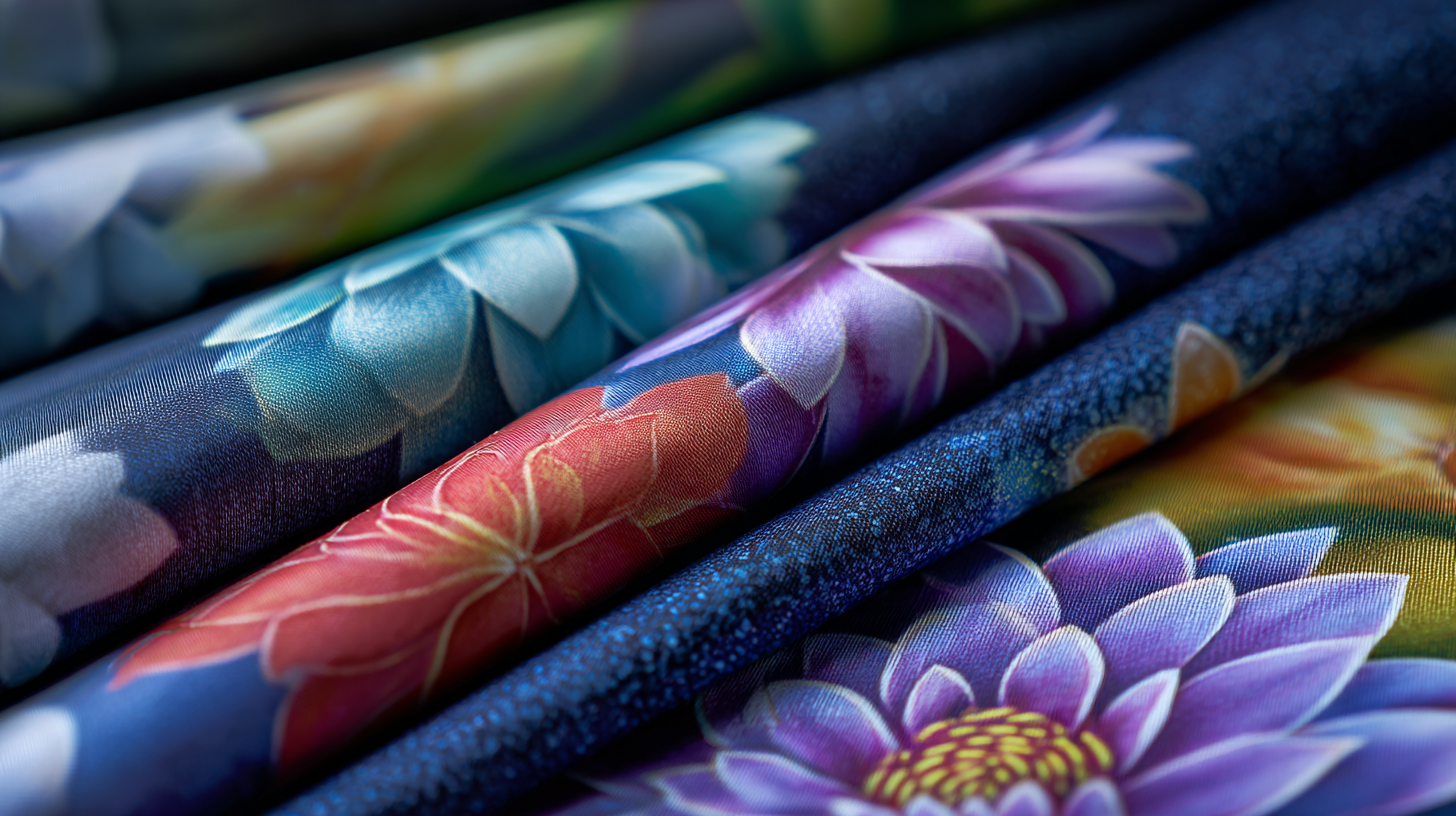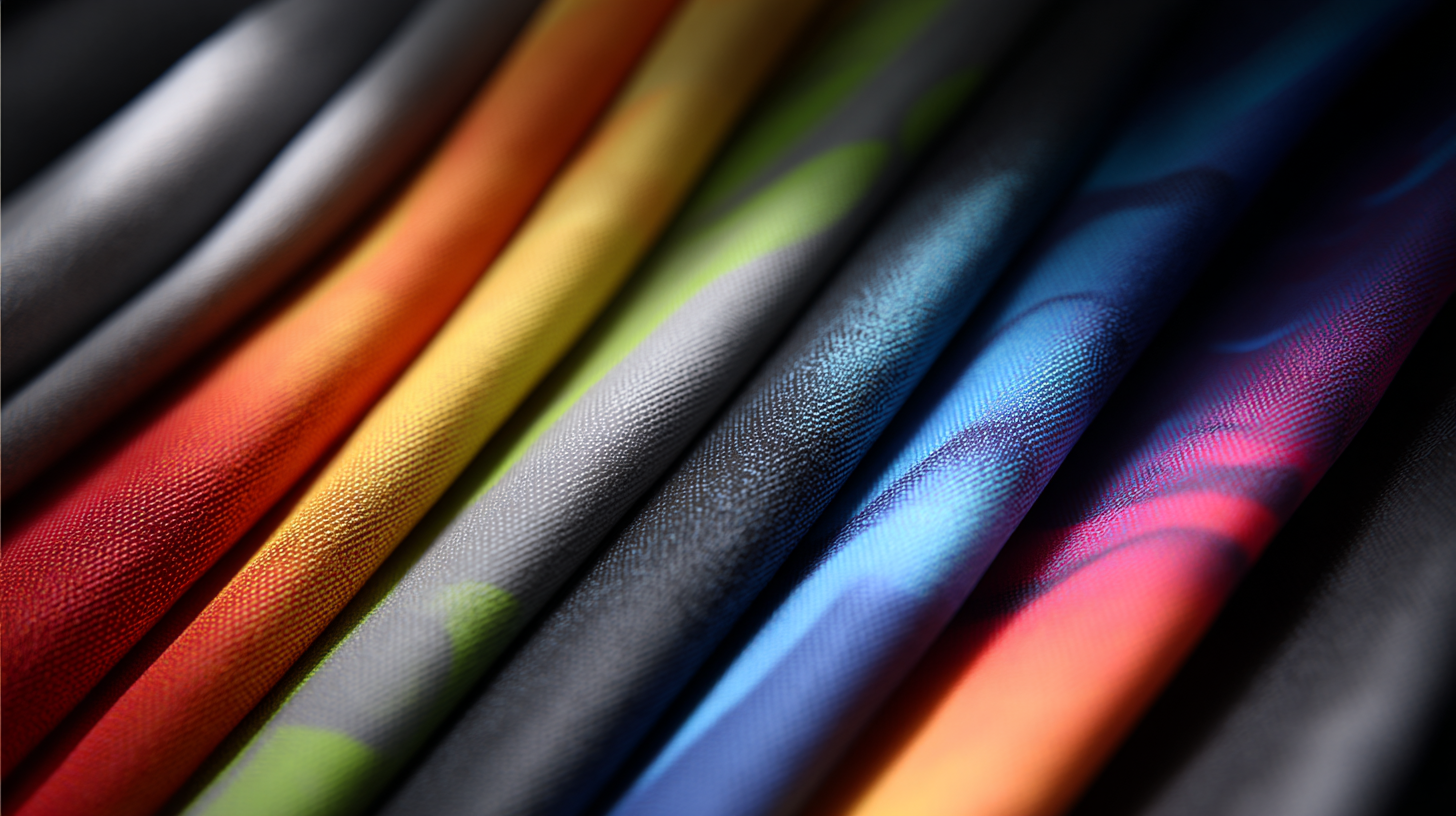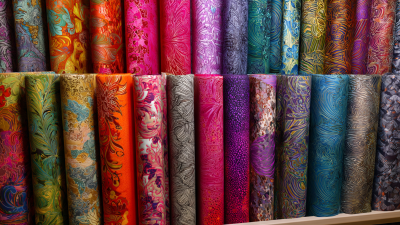In contemporary design, the exploration of materials that blend innovation and functionality is paramount, and Printable Polyester Fabric stands out as a prime candidate. This versatile fabric has garnered significant attention across various fields, from fashion to interior design, due to its ability to seamlessly adapt to diverse creative visions. Whether it's vibrant prints for high-impact clothing, customizable patterns for home décor, or unique applications in promotional items, Printable Polyester Fabric offers a canvas for limitless imagination. Its durability, ease of printing, and compatibility with modern technologies allow designers to push boundaries and create stunning visual narratives. In this guide, we will delve into the multifaceted uses of Printable Polyester Fabric, providing insights on how to effectively leverage its properties to achieve exceptional results in your design projects.

Printable polyester fabric is gaining traction in modern design due to its unique properties that cater to various applications. This synthetic fabric is not only durable and lightweight but also possesses excellent color vibrancy and print quality, making it an ideal choice for designers aiming for impactful visual presentations. Its ability to handle intricate patterns and designs provides a canvas for creativity, enabling the creation of custom fabrics that can stand out in both fashion and interior design.
The advancements in printing techniques, particularly in the domain of printed electronic textiles, further enhance the versatility of printable polyester. These innovations allow the incorporation of technology into fabrics, paving the way for smart textiles that can perform functions beyond mere aesthetics. As a result, designers can leverage printable polyester to create interactive and functional apparel or furnishings, elevating the user experience. The combination of these unique fabric properties with cutting-edge printing methods ensures that printable polyester remains at the forefront of modern design.
Printable polyester fabric is making significant strides across various industries, particularly in fashion, interior design, and advertising. The fashion industry, valued at approximately $2.5 trillion globally, is increasingly leveraging this versatile material for custom prints and designs. According to a recent report by Research and Markets, the demand for digitally printed textiles is projected to grow at a CAGR of 15% from 2021 to 2026. This growth can be attributed to consumers' desire for personalization and unique styles, allowing designers to push creative boundaries and cater to niche markets.
In interior design, printable polyester fabric is emerging as a favored choice for upholstery and décor. As highlighted in the 2022 Global Interior Design Market report, the increasing trend towards sustainable and customizable décor solutions is fueling the rise of digital printing technologies. The ability to create bespoke patterns and vibrant designs on durable polyester fabric allows designers to enhance interiors with a personal touch, meeting the diverse preferences of homeowners and commercial clients alike. Furthermore, the advertising industry is reaping the benefits of printable polyester through eye-catching banners, signage, and promotional materials that stand out in a crowded marketplace. With its durability and vibrant color reproduction, printable polyester has become an essential tool for brands seeking to create a lasting impression.

The printable polyester fabric market is currently witnessing a significant transformation, driven by the rising demand for sustainable and customizable materials in modern design. Recent data indicates that the digital printing market is set to grow from $39.63 billion in 2023 to $87.21 billion by 2030, achieving a remarkable CAGR of 11.9%. This growth is particularly prevalent in North America, where a focus on eco-friendly practices is pushing brands to explore innovative materials like printable polyester that not only meet aesthetic requirements but also adhere to sustainability standards.
Moreover, the digital textile market continues to expand due to advancements in inkjet printing technology, which enhances the versatility and complexity of designs on various textiles. As customization becomes a hallmark of consumer preference, the potential applications for printable polyester fabric are broadening. Beyond fashion, sectors like activewear and packaging are tapping into this trend. For instance, the U.S. activewear market, projected to see substantial growth, reflects how versatile materials are increasingly favored for their adaptability and environmental benefits, paving the way for a more sustainable future in design.
The versatility of printable polyester fabric has been a game-changer in modern design, particularly in textiles. As demand for high-quality prints surges, maximizing print quality on polyester has become an essential focus for manufacturers and designers alike. Industry experts advocate for adopting advanced printing technologies and sustainable practices to enhance the visual appeal and durability of prints. Techniques such as digital printing and sublimation are increasingly popular, allowing for vivid colors and intricate patterns that meet the aesthetic standards of contemporary fashion and interior design.
Recent discussions within the textile industry highlight ongoing challenges and breakthroughs in printing technologies, particularly in regions like Bangladesh. The Textile Processing Innovation Cell is actively addressing these issues, emphasizing the need for innovation that aligns with environmentally friendly practices. Moreover, upcoming conferences, such as the one at Avinashilingam University, will delve into strategies for integrating sustainable printing and packaging methods. These initiatives underscore the importance of collaboration among experts to refine techniques and ensure that polyester fabrics remain at the forefront of modern design while minimizing environmental impact.
The landscape of printable polyester fabric is evolving rapidly, fueled by advancements in technology and growing consumer demands for sustainable and customizable materials. According to a recent report by Smithers Pira, the global printable textiles market is projected to reach $2.2 billion by 2026, with polyester fabric commanding a significant share due to its adaptability and durability. This trend is further propelled by innovations in digital printing techniques, which are becoming more accessible and efficient, allowing for intricate designs and vibrant colors that were previously impossible.
In the next five years, we can anticipate breakthroughs in fabric treatments that enhance the performance characteristics of printable polyester. For instance, researchers are working on developing eco-friendly inks and coatings that not only reduce environmental impact but also improve the fabric’s resistance to fading, staining, and physical wear. Additionally, the integration of smart technology into fabrics, such as embedded sensors for tracking usage or performance, represents an exciting frontier. As consumer interest in personalized and functional textiles grows, printable polyester will likely expand its role in various applications, from fashion to interior design, making it an essential material in modern design.







